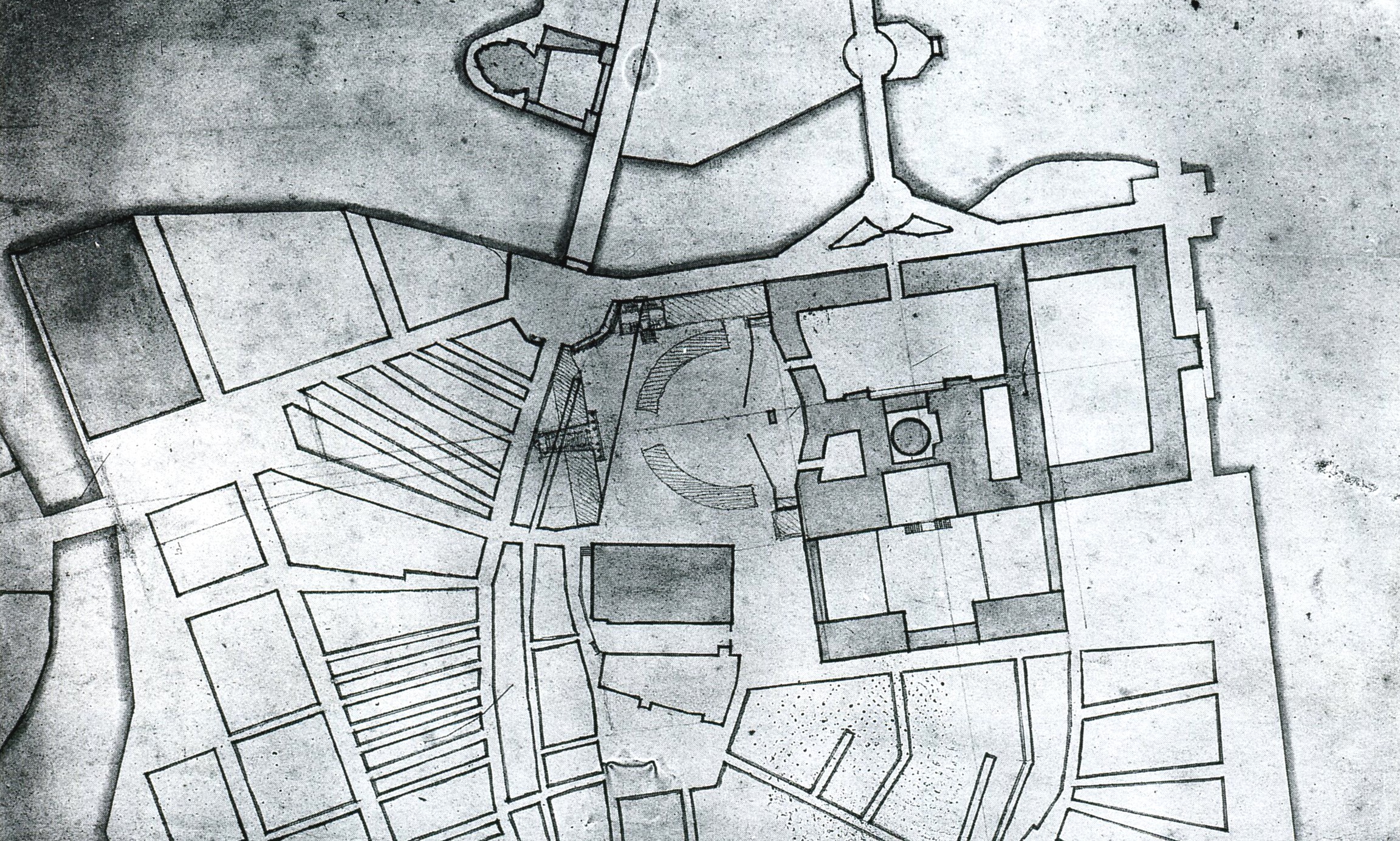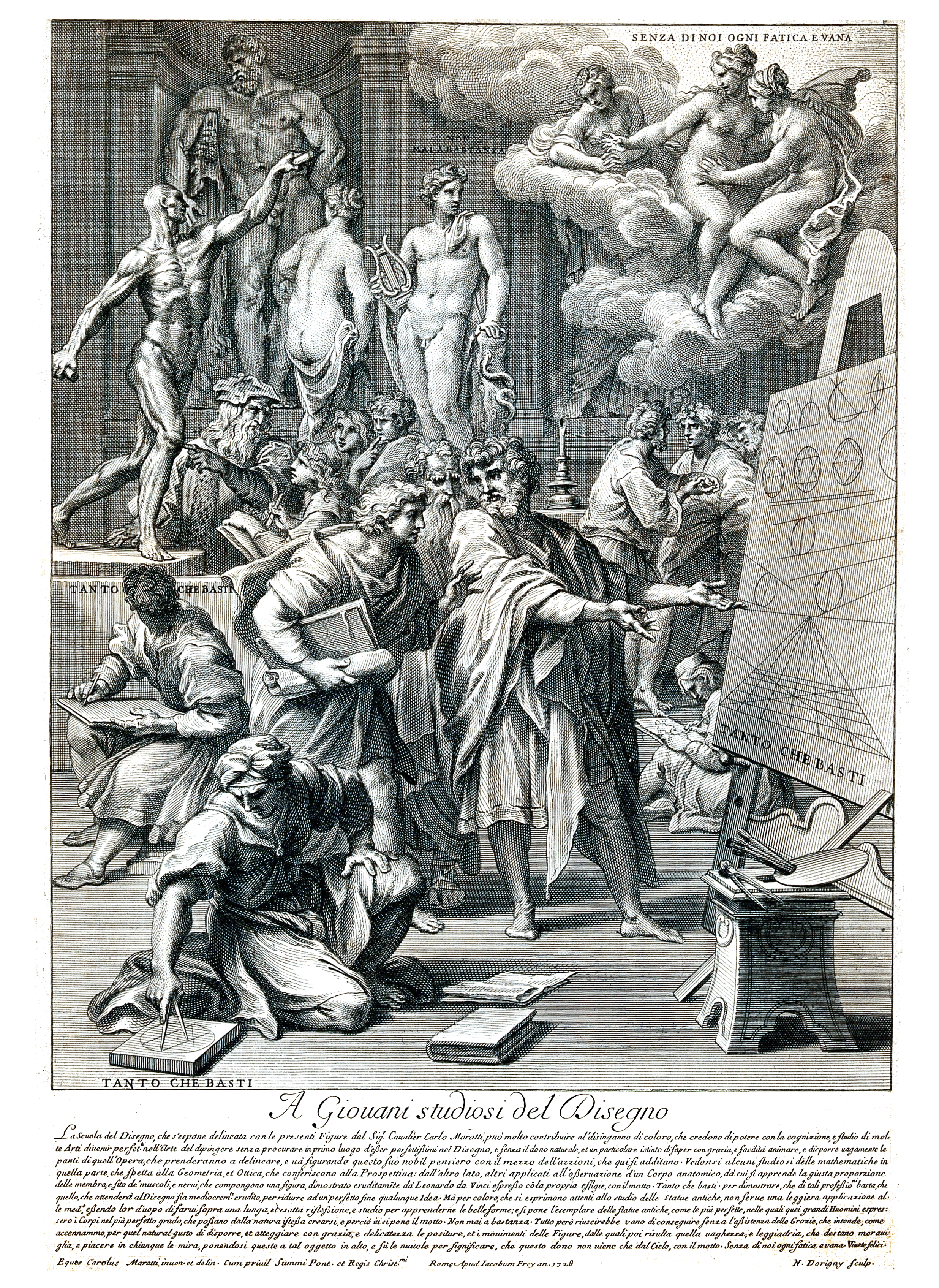|
Royal Swedish Academy Of Arts
The Royal Swedish Academy of Fine Arts (), commonly called the Royal Academy, is located in Stockholm, Sweden. An independent organization that promotes the development of painting, sculpture, architecture, and other fine arts, it is one of several Swedish Royal Academies. The Royal Institute of Art, an art school that was once an integral part of the academy, was broken out in 1978 as an independent entity directly under the supervision of the Ministry of Education. History In 1735, Carl Gustaf Tessin set up a drawing school at Stockholm Castle, naming it the Royal Drawing Academy. It was modeled after French academies of the day as a gathering place for established artists and art connoisseurs. The painters Guillaume Taraval, Johan Henrik Scheffel, and Olof Arenius and the architect Carl Hårleman taught there, and the first group of students included Johan Pasch. In 1766, the academy expanded its activities following a parliamentary decree. In 1768, its name was cha ... [...More Info...] [...Related Items...] OR: [Wikipedia] [Google] [Baidu] |
Johan Tobias Sergel
Johan Tobias Sergel (; 7 September 1740 in Stockholm – 26 February 1814 in Stockholm) was a Swedish neoclassical sculptor. Sergels torg, the largest square in the centre of Stockholm and near where his workshop stood, is named after him. Life Johan Tobias Sergel was born in Stockholm in 1740. He was the son of the decorator, Christoffer Sergel and Elisabet (née Swyrner), and was the brother of the decorator, Anna Brita Sergel. His first teacher was Pierre Hubert Larchevêsque.New International Encyclopedia, 1905 After studying in Paris, he went to Rome, where he moved in the same circles as the painters Alexander Runciman and James Barry.Macmillan, Duncan (2023), ''Scotland and the Origins of Modern Art'', Lund Humphries, London, pp. 65 - 84, He stayed in Rome for twelve years and sculpted a number of groups in marble. Besides subjects from classical mythology such as the ''Diomedes Stealing the Palladium'', which he sold to the British collector, Thomas Mansel Talbot, i ... [...More Info...] [...Related Items...] OR: [Wikipedia] [Google] [Baidu] |
Organizations Established In 1773
An organization or organisation (Commonwealth English; see spelling differences) is an entity—such as a company, or corporation or an institution (formal organization), or an association—comprising one or more people and having a particular purpose. Organizations may also operate secretly or illegally in the case of secret societies, criminal organizations, and resistance movements. And in some cases may have obstacles from other organizations (e.g.: MLK's organization). What makes an organization recognized by the government is either filling out incorporation or recognition in the form of either societal pressure (e.g.: Advocacy group), causing concerns (e.g.: Resistance movement) or being considered the spokesperson of a group of people subject to negotiation (e.g.: the Polisario Front being recognized as the sole representative of the Sahrawi people and forming a partially recognized state.) Compare the concept of social groups, which may include non-organizat ... [...More Info...] [...Related Items...] OR: [Wikipedia] [Google] [Baidu] |
Academies Of Arts
An academy (Attic Greek: Ἀκαδήμεια; Koine Greek Ἀκαδημία) is an institution of tertiary education. The name traces back to Plato's school of philosophy, founded approximately 386 BC at Akademia, a sanctuary of Athena, the goddess of wisdom and skill, north of Athens, Greece. The Royal Spanish Academy defines academy as scientific, literary or artistic society established with public authority and as a teaching establishment, public or private, of a professional, artistic, technical or simply practical nature. Etymology The word comes from the ''Academy'' in ancient Greece, which derives from the Athenian hero, ''Akademos''. Outside the city walls of Athens, the gymnasium was made famous by Plato as a center of learning. The sacred space, dedicated to the goddess of wisdom, Athena, had formerly been an olive grove, hence the expression "the groves of Academe". In these gardens, the philosopher Plato conversed with followers. Plato developed his sessions ... [...More Info...] [...Related Items...] OR: [Wikipedia] [Google] [Baidu] |
Culture In Stockholm
Apart from being a large city with an active cultural life, Stockholm, the capital of Sweden, houses many national cultural institutions. There are two UNESCO World Heritage Sites in the Stockholm County area: the Royal Palace Drottningholm (within Ekerö Municipality) and the Skogskyrkogården (The Woodland Cemetery). Stockholm was the 1998 European City of Culture. Literature Authors connected to Stockholm include the poet and songwriter Carl Michael Bellman (1740–1795), novelist and dramatist August Strindberg (1849–1912), and novelist Hjalmar Söderberg (1869–1941), all of whom made Stockholm part of their works. Other authors with notable heritage in Stockholm were the Nobel Prize laureate Eyvind Johnson (1900–1976) and the popular poet and composer Evert Taube (1890–1976). The novelist Per Anders Fogelström (1917–1998) wrote a popular series of historical novels depicting life in Stockholm from the 19th to the mid-20th century. Archit ... [...More Info...] [...Related Items...] OR: [Wikipedia] [Google] [Baidu] |
National Academies Of Arts And Humanities
National may refer to: Common uses * Nation or country ** Nationality – a ''national'' is a person who is subject to a nation, regardless of whether the person has full rights as a citizen Places in the United States * National, Maryland, census-designated place * National, Nevada, ghost town * National, Utah, ghost town * National, West Virginia, unincorporated community Commerce * National (brand), a brand name of electronic goods from Panasonic * National Benzole (or simply known as National), former petrol station chain in the UK, merged with BP * National Book Store, a bookstore and office supplies chain in the Philippines * National Car Rental, an American rental car company * National Energy Systems, a former name of Eco Marine Power * National Entertainment Commission, a former name of the Media Rating Council * National Motor Vehicle Company, Indianapolis, Indiana, USA 1900–1924 * National Radio Company, Malden, Massachusetts, USA 1914–1991 * National ... [...More Info...] [...Related Items...] OR: [Wikipedia] [Google] [Baidu] |
List Of Swedish Artists
This is a list of notable Swedish visual artists. A * Emil Åberg (1864–1940), painter, graphics artist, illustrator, animator, and director *Emma Adbåge (born 1982), illustrator *Ottilia Adelborg (1855–1936), illustrator *Ulla Adlerfelt (1736–1765) *Sofia Adlersparre (1808–1862), painter *Mattias Adolfsson (born 1965), illustrator *Gösta Adrian-Nilsson GAN (1884–1965), painter * Anna Agnér (1896–1977), Swedish painter *Ivan Aguéli (1869–1917), painter and writer * Märta Afzelius (1887–1961), textile artist * Sofia Ahlbom (1823–1868) * Lea Ahlborn (1829–1891), printmaker * Modhir Ahmed (born 1956), painter, printmaker *Margareta Alströmer (1763–1816), painter * Nils Elias Anckers (1858–1921), marine artist *Agneta Andersson (born 1958), sculptor * Christian Pontus Andersson (born 1977), sculptor * J. Tobias Anderson (born 1971) * Karin Mamma Andersson (born 1962), painter * Lena Anderson (born 1939), illustrator and children's writer * Oskar And ... [...More Info...] [...Related Items...] OR: [Wikipedia] [Google] [Baidu] |
Fredrik Blom
Fredrik Blom (24 January 1781 – 25 September 1853) was a Swedish military officer, architect and professor at the Royal Swedish Academy of Arts. Life Fredrik Blom was born in Karlskrona. His father was a compass maker journeyman. He began his career as a carpenter, working for the navy at the Karlskrona naval base. He was educated by Johan Törnström and his aesthetic talent seems to have been identified early on, probably by his superior Jonas Lidströmer. In 1798 he was relieved from his job as a carpenter and probably started studying architecture at the Royal Swedish Academy of Arts the same year. He was taught and influenced by Louis Jean Desprez and Fredrik Magnus Piper. His first independent work was the rather unassuming (and later heavily altered) town hall of Sölvesborg, completed in 1805. Already by this time, however, he had produced proposals for purely decorative work, much in the style of Fredrik Magnus Piper. After his studies he returned to Karlskrona in 180 ... [...More Info...] [...Related Items...] OR: [Wikipedia] [Google] [Baidu] |
Nicodemus Tessin The Elder
Nicodemus Tessin the Elder () (7 December 1615 – 24 May 1681) was an important Swedish architect. Biography Nicodemus Tessin was born in Stralsund in Pomerania and came to Sweden as a young man. There he met and worked with the architect Simon de la Vallée. He worked for the Swedish Chancellor Axel Oxenstierna before he travelled for further studies to Germany, Italy, France and in the Netherlands, where he got to know the new Baroque style in architecture. Back in Sweden he rebuilt Borgholm Castle, then built Skokloster Castle and the Wrangel Palace in Stockholm. His most important work was Drottningholm Palace, now a world heritage site. Upon his death his son Nicodemus Tessin the Younger continued his projects. Selected works * Borgholm Castle * Drottningholm Palace * Bonde Palace * Skokloster Castle * Strömsholm Palace * Näsby castle * Stenbock Palace * Wrangel Palace * Bååt Palace * Kalmar Cathedral Literature * K. Neville, ''Nicodemus Tessin the Elde ... [...More Info...] [...Related Items...] OR: [Wikipedia] [Google] [Baidu] |
Stockholm Palace
Stockholm Palace, or the Royal Palace, ( or ) is the official residence and major royal palace of the Swedish monarch (King Carl XVI Gustaf and Queen Silvia use Drottningholm Palace as their usual residence). Stockholm Palace is in Stadsholmen, in Gamla stan in the capital, Stockholm. It neighbours the Riksdag building. The offices of the King, the other members of the Swedish royal family, and the Royal Court of Sweden are here. The palace is used for representative purposes by the King whilst performing his duties as the head of state. This royal residence has been in the same location by Norrström in the northern part of Gamla stan in Stockholm since the middle of the 13th century when Tre Kronor Castle was built. In modern times the name relates to the building called ''Kungliga Slottet''. The palace was designed by Nicodemus Tessin the Younger and erected on the same place as the medieval Tre Kronor Castle which was destroyed in a fire on 7 May 1697. Due to the cost ... [...More Info...] [...Related Items...] OR: [Wikipedia] [Google] [Baidu] |
Opponenterna
('the Opponents') was a group of 84 Swedish artists who, under the leadership of Ernst Josephson, organized the Opponent Movement () in the 1880s. On 27 March 1885, the members submitted their written demands to the Royal Swedish Academy of Fine Arts for a modernization and reform of art education, exhibition activities and support for artists. However, their demands were rejected, which in turn led to the formation of the Konstnärsförbundet ('the Artists' Association') the following year. Members The movement primarily consisted of young artists, who had been to Paris and the Swedish artists' colony in Grez-sur-Loing and were influenced by French painting, which soon had a great impact on the Swedish public as well. Some of the Opponents included August Hagborg, Per Hasselberg, , Ernst Josephson, Carl Larsson, Eugène Jansson, Richard Bergh, Arvid ''Mauritz'' Lindström, Karl Nordström, Johan Krauthén, and Georg Pauli. Most of them were stationed on Dalarö in the summe ... [...More Info...] [...Related Items...] OR: [Wikipedia] [Google] [Baidu] |
Academic Art
Academic art, academicism, or academism, is a style of painting and sculpture produced under the influence of European academies of art. This method extended its influence throughout the Western world over several centuries, from its origins in Italy in the mid-16th century, until its dissipation in the early 20th century. It reached its apogee in the 19th century, after the end of the Napoleonic Wars in 1815. In this period, the standards of the French were very influential, combining elements of Neoclassicism and Romanticism, with Jean-Auguste-Dominique Ingres a key figure in the formation of the style in painting. The success of the French model led to the founding of countless other art academies in several countries. Later painters who tried to continue the synthesis included William-Adolphe Bouguereau, Thomas Couture, and Hans Makart among many others. In sculpture, academic art is characterized by a tendency towards monumentality, as in the works of Auguste Bartholdi and ... [...More Info...] [...Related Items...] OR: [Wikipedia] [Google] [Baidu] |



